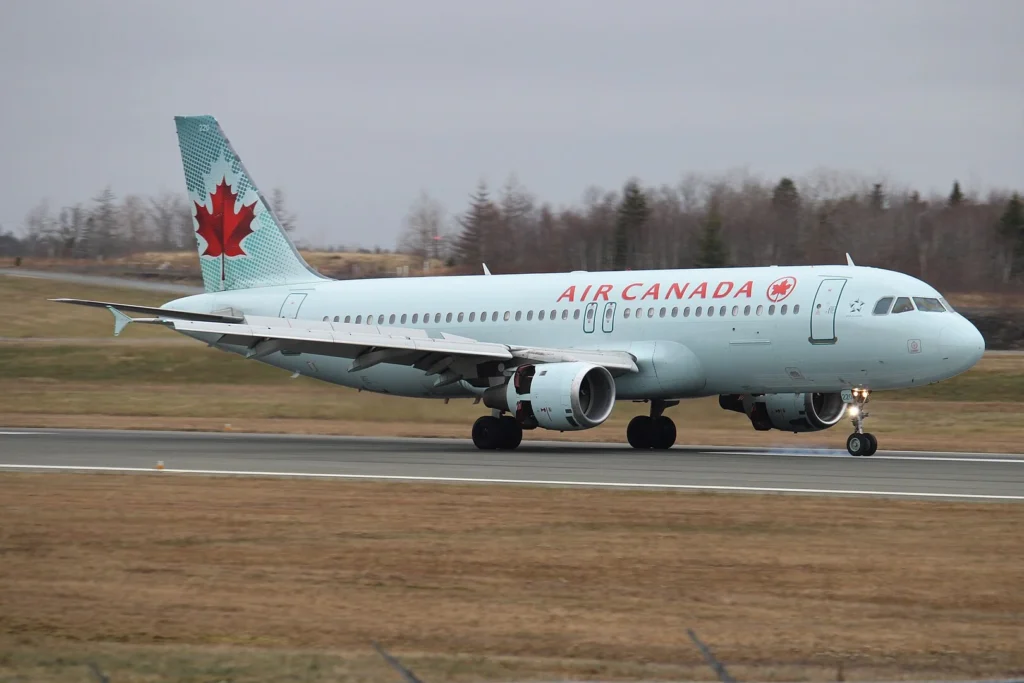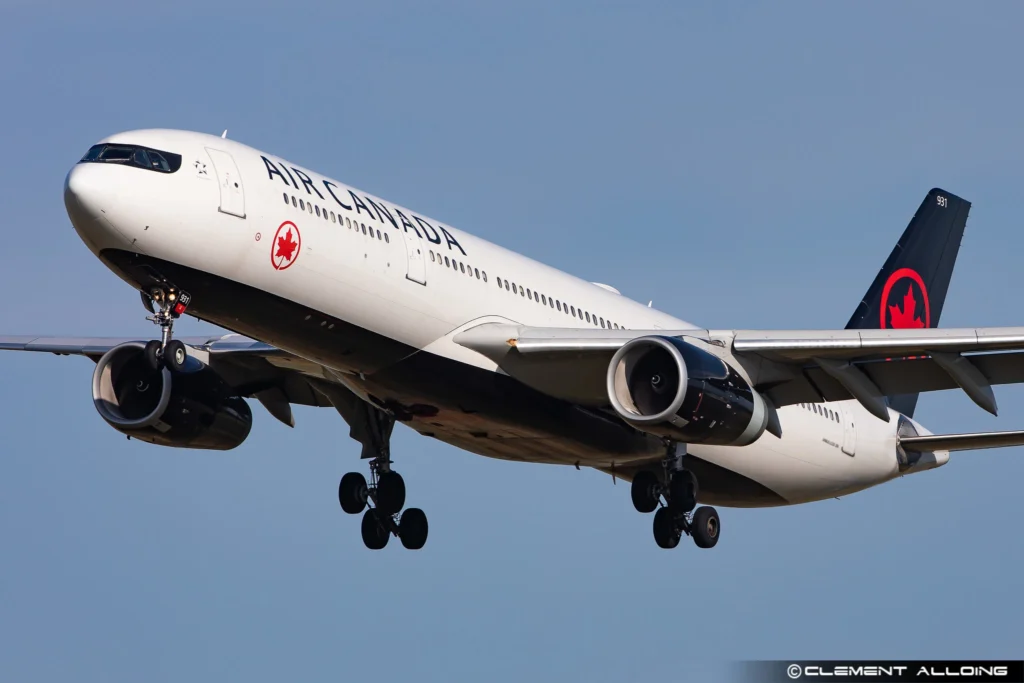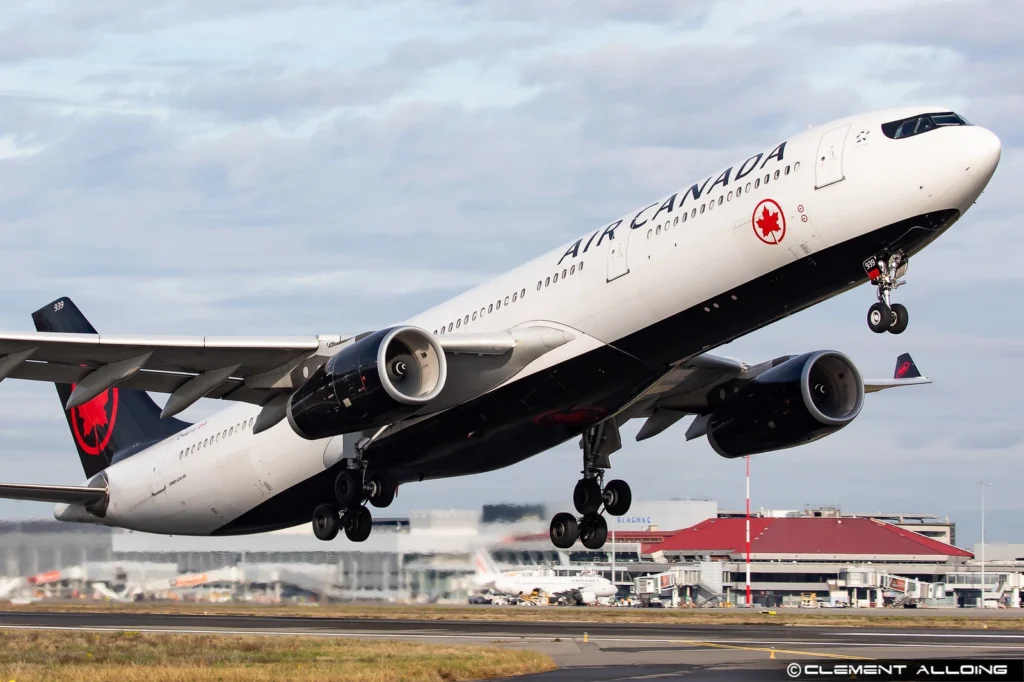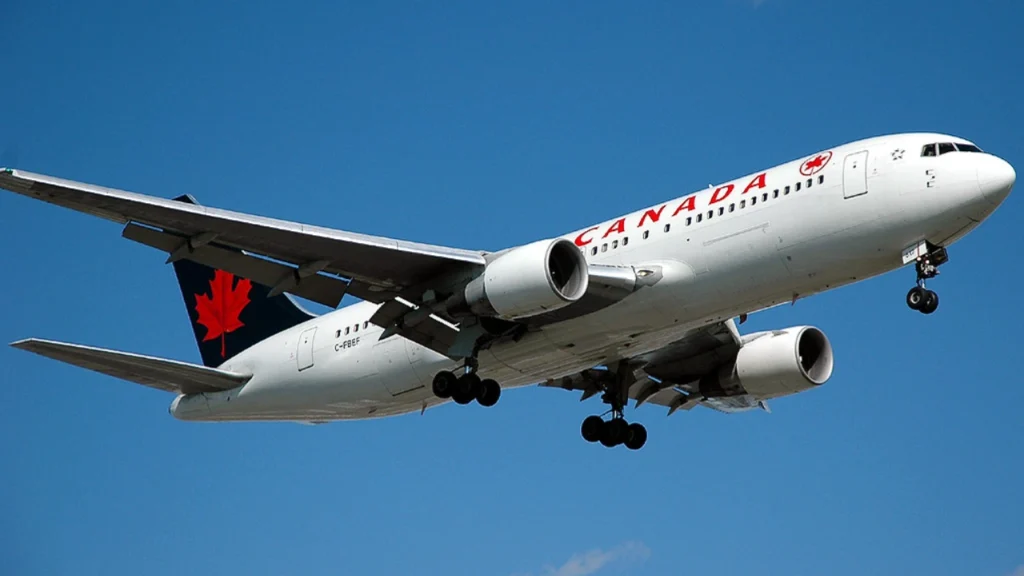
Air Canada (AC) имеет самую большую внутреннюю сеть в Канаде, охватывающую краткосрочные, среднемагистральные и трансконтинентальные рынки. В последнем расписании рейсов выделяются самые загруженные канадские пары внутренних городов, основанные на общих рейсах (двухсторонних), доступных местах и доступных милях мест (ASM). Эти показатели показывают, где Air Canada развертывает частоту маршрутов и пропускную способность по всей своей канадской сети.
Последние данные указывают на то, что основное внимание уделяется некоторым ключевым коридорам, особенно между Торонто и Монреалем, Ванкувером и Калгари. В этих городских парах больше всего рейсов и мест, но расширенная сеть также включает в себя крупные региональные соединения и более длинные внутренние маршруты.
 Фото: Aero Icarus | Flickr
Фото: Aero Icarus | FlickrЛучшие маршруты по рейсам
Маршрут между Монреаль-Трюдо и Торонто Пирсон является самым загруженным внутренним маршрутом Air Canada, с 910 ежемесячными рейсами в обоих направлениях в июне 2025 года. Эта пара городов долгое время была одной из самых загруженных в Северной Америке с точки зрения частоты полетов и продолжает оставаться основной частью высокочастотного графика Air Canada.
Затем идет Ванкувер-Торонто с 817 рейсами и Калгари-Торонто и Оттава-Торонто с 600 рейсами. Это основные трансконтинентальные и внутрипровинциальные маршруты Air Canada.
Другие известные высокочастотные маршруты:
- Ванкувер-Калгари: 512 рейсов
- Галифакс-Торонто: 474 рейса
- Эдмонтон-Торонто: 360 рейсов
Хотя в ASM преобладают трансконтинентальные маршруты, некоторые маршруты на короткие и средние расстояния, такие как Оттава-Торонто и Ванкувер-Калгари, являются одними из самых высокочастотных из-за операций челночного типа.
 Фото: Atlantic Aviation Media - https://www.flickr.com/photos/193032273@N08/51174440150/, CC BY 2.0, https://commons.wikimedia.org/w/index.php?curid=107555292
Фото: Atlantic Aviation Media - https://www.flickr.com/photos/193032273@N08/51174440150/, CC BY 2.0, https://commons.wikimedia.org/w/index.php?curid=107555292Лучшие маршруты по местам
Самый загруженный маршрут Air Canada по креслам - маршрут Ванкувер-Торонто предлагает 183 705 месячных мест, благодаря высокой частоте и развертыванию более крупных самолетов, в том числе широкофюзеляжных на определенных частотах. Хотя он занимает второе место по количеству рейсов, он опережает Монреаль-Торонто, который предлагает 151 688 мест в июне.
Третье место занимает маршрут Торонто-Калгари с 105 672 месячными местами, что обусловлено сильным корпоративным спросом между Онтарио и Альбертой.
Другие маршруты высокой пропускной способности:
- Монреаль-Ванкувер: 90 014 мест
- Галифакс-Торонто: 80 106 мест
- Оттава-Торонто: 93 603 места
Несмотря на то, что частота приводит к увеличению вместимости мест на большинстве маршрутов, некоторые дальнемагистральные маршруты, такие как Монреаль-Калгари (55 840 мест) и Оттава-Ванкувер (38 160 мест), имеют более высокие средние места на рейс.
 Источник: Clément Alloing
Источник: Clément AlloingЛучшие маршруты ASM
В рейтинге по доступным милям кресел (ASMs) Ванкувер-Торонто является самым загруженным маршрутом с более чем 383 миллионами ASM в июне. Он значительно опережает другие внутренние маршруты из-за большей дальности полета и большего количества предлагаемых мест.
Маршрут Монреаль-Ванкувер занимает второе место с 207 миллионами ASM, а Калгари-Торонто следует примерно за 177 миллионами ASM.
Другие маршруты высокой ASM включают:
- Оттава-Ванкувер: 84,4 миллиона
- Монреаль-Калгари: 105 миллионов
- Галифакс-Торонто: 64,2 миллиона
Несмотря на то, что некоторые маршруты, в том числе Тандер-Бей-Торонто или Оттава-Монреаль, имеют высокую частоту, они учитывают более низкий ASM из-за короткого расстояния, в то время как некоторые низкочастотные маршруты на большие расстояния, такие как Галифакс-Ванкувер или Монреаль-Виктория, занимают более высокое место.
 Источник: Clément Alloing
Источник: Clément AlloingРегиональное и Hub-доминирование
Торонто Пирсон является операционным центром национальной сети Air Canada. Более 60% из 30 самых загруженных маршрутов имеют YYZ. Он стратегически расположен, имеет глобальную связь и концентрацию бизнес-трафика, что делает его жизненно важным для работы авиакомпании в Канаде.
Монреаль-Трюдо служит важной двойной цели — как ворота и центр в Квебек и Атлантическую Канаду. Для западной Канады Ванкувер является региональным связующим звеном и конечной точкой для трансконтинентальных рейсов. Он соединяется с Эдмонтоном, Виннипегом, Калгари и небольшими направлениями, такими как Саскатун и Регина.
Кроме того, важность Ванкувера для дальнемагистрального внутреннего обслуживания особенно отражается на его высоком уровне ASM.
Хотя высокочастотные магистральные маршруты преобладают в топ-30 самых загруженных маршрутов, для регионального доступа и фидерного трафика важен ряд небольших городских пар. К ним относятся:
- Монктон-Торонто: 150 рейсов, 28350 мест
- Фредериктон-Торонто: 60 рейсов, 11340 мест
- Гандер-Торонто: 34 рейса, 4638 мест
- Шарлоттаун-Торонто: 28 рейсов, 5011 мест
Эти связи играют важную роль в обеспечении доступа в течение всего года для небольших городов и уравновешивают императив прибыли Air Canada с покрытием государственных услуг.
| Ранг | Маршрут | Полеты | Места | АСМ |
| 1 1 | Монреаль-Трюдо (YUL) - Торонто (YYZ) | 910 | 151688 | 47781720 |
| 2 2 | Ванкувер (YVR) - Торонто (YYZ) | 817 | 183705 | 3.83E+08 |
| 3 | Калгари (YYC) — Торонто (YYZ) | 600 | 105672 | 1.77E+08 |
| 4.4 | Оттава (YOW) — Торонто (YYZ) | 600 | 93603 | 21154278 |
| 5 | Ванкувер (YVR) - Калгари (YYC) | 512 | 81707 | 34970596 |
| 6.6 | Галифакс (YHZ) — Торонто (YYZ) | 474 | 80106 | 64245012 |
| 7. | Эдмонтон (YEG) — Торонто (YYZ) | 360 | 65568 | 1.10E+08 |
| 8 | Виннипег (YWG) — Торонто (YYZ) | 360 | 56814 | 53177904 |
| 9 9 | Монреаль-Трюдо (YUL) - Ванкувер (YVR) | 348 | 90014 | 2.07E+08 |
| 1010 | Эдмонтон (YEG) — Ванкувер (YVR) | 286 | 42938 | 21640752 |
| 11. | Монреаль-Трюдо (YUL) - Калгари (YYC) | 238 | 55840 | 1.05E+08 |
| 12. | Галифакс (YHZ) — Монреаль-Трюдо (YUL) | 228 | 42532 | 21308532 |
| 13 | Монреаль-Трюдо (YUL) - Виннипег (YWG) | 180 | 27340 | 30948880 |
| 14 | Оттава (YOW) - Ванкувер (YVR) | 180 | 38160 | 84486240 |
| 15 | Ванкувер (YVR) - Виннипег (YWG) | 180 | 26760 | 31095120 |
| 16 | Монктон (YQM) — Торонто (YYZ) | 1501 | 28350 | 21290850 |
| 177 | Эдмонтон (YEG) — Монреаль-Трюдо (YUL) | 120 | 2015 год2 | 37281200 |
| 18 | Thunder Bay (YQT) — Торонто (YYZ) | 102 | 19174 | 10890832 |
| 19 | Сент-Джонс (YYT) — Торонто (YYZ) | 83 | 14083 | 1863—1809 |
| 20 | Оттава (YOW) - Монреаль-Трюдо (YUL) | 68 | 9444 | 887736 |
| 21 | Оттава (YOW) - Калгари (YYC) | 60 | 8760 | 15715440 |
| 22. | Фредериктон (YFC) — Торонто (YYZ) | 60 | 11340 | 7495740 |
| 23 | Галифакс (YHZ) - Ванкувер (YVR) | 60 | 10140 | 27986400 |
| 24 | Озеро оленей (YDF) - Монреаль-Трюдо (YUL) | 53 | 7261 | 5866888 |
| 25 | Гандер (YQX) — Торонто (YYZ) | 34 | 4638 | 5783586 |
| 26 | Монреаль-Трюдо (YUL) — Виктория (YYJ) | 33 | 5577 | 12905178 |
| 27 | Ванкувер (YVR) - Саскатун (YXE) | 33 | 4950 | 3722400 |
| 28 | Регина (YQR) — Ванкувер (YVR) | 32 | 5408 | 4494048 |
| 29 | Квебек (YQB) - Торонто (YYZ) | 30 | 4474 | 2035670 |
| 30 | Шарлоттаун (YYG) — Торонто (YYZ) | 28 | 5011 | 4144097 |
 Фото: Caribb | Flickr
Фото: Caribb | FlickrОбзор маршрутов и тенденции
Среди 30 лучших внутренних маршрутов Торонто Пирсон (YYZ) является местом назначения или происхождения более чем на 18 маршрутах, что подчеркивает его роль в качестве хаба во внутренней сети Air Canada.
К ним относятся маршруты высокой плотности из Монреаля, Ванкувера, Калгари и Галифакса, а также менее частые услуги из небольших общин, таких как Гандер, Озеро оленей и Шарлоттаун.
Монреаль-Трюдо (YUL) и Ванкувер (YVR) также представлены 12 и 11 маршрутами соответственно. Они составляют основу региональной и трансконтинентальной сети Air Canada. Калгари (YYC) и Оттава (YOW) являются значительными вторичными хабами, а именно для восточно-западных рейсов.
Одной из заметных тенденций является доминирование центральной и восточной Канады с точки зрения частоты происхождения и назначения. Коридоры Онтарио-Квебек-Атлантическая Канада составляют значительную часть сети, частично обусловленную плотностью населения и межгородским корпоративным спросом на поездки.
Оставайтесь с нами. Следуйте за нами в социальных сетях для последних обновлений.
Присоединяйтесь к нам в Telegram Group для последних обновлений авиации. Следуйте за нами в Google News.
Крупнейшие внутренние маршруты American Airlines в 2025 году No4 удивят Ты
30 самых оживленных внутренних маршрутов Air Canada в 2025 году, No8 удивит Впервые появился на Aviation A2Z.












